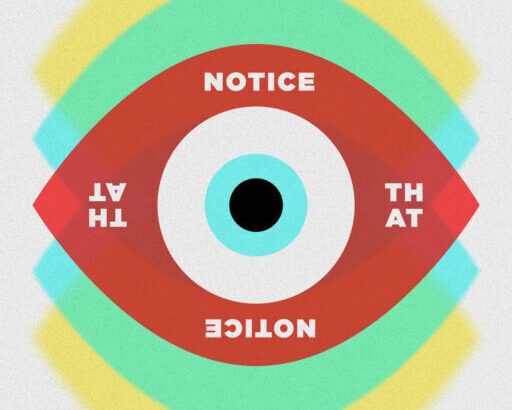Fly on the Wall: Melissa (75)

Melissa lays the groundwork for our new segment, Fly on the Wall. Our hope with fly on the wall is to allow you to sit in the chair alongside Melissa, to see the messiest and most beautiful moments between therapist and client.
Welcome to Fly on the Wall.
Case conceptualization is typically a moment in time, based on what the clinician knows right now. Fly on the wall demonstrates the ongoing, living nature of case conceptualization. We’ll show that by coming back to it regularly.
Theoretically? Conceptually?
We hope to show you the actuality of what it’s like for us to sit in the room with a client.
We’re human, too. Even with all the training and expertise, not every report will be wrapped into a pretty bow, not every session goes well.
Here we’ll demonstrate the moments when things don’t go well and the protocol is completely dropped.
The Relationship Dynamic
“I made massive assumptions. And she presented that as an object self to me, of being a “good Christian mother.” but right under that, was a real human being.”
- To start, this client waited for 18 months to work with Melissa. The work felt pressured.
- The client comes from a highly religious background and has a daughter that isn’t heterosexual.
- Melissa, on the other hand, is well… not religious.
- Based on SIP, Melissa decided to bring that to the forefront immediately. The client responded very openly, surprising Melissa.
- Melissa evaluated her own judgments and biases, checking her pre-offended attitude.
- Melissa began this relationship hoping to change the mind of this client so she would stop traumatizing her daughter with her judgment.
- So, that was her approach. She’s more combative and bristly during the first encounter.
- But halfway through the session, she realized the client was much more soft, open, and vulnerable.
Stated Treatment Goals
- How do I “deal” with my daughter?
- Melissa refused to address this with EMDR because that would require her to validate it as a trauma.
- Knowing the bias in this, had Melissa thought this was a true need, she would have referred this client out.
- But through talking with this client openly, Melissa realized the client wasn’t experiencing her daughter’s homosexuality as traumatic.
- Right below this object veneer, there was deep and sincere grief that she’d failed as a mother.
- This is where EMDR came in.
- What’s the general flow of the session? The first half is about relational building. The last year has involved major traumatic events that have paused EMDR as we attend to a current crisis. The focus has been on maintaining that relational connection, allowing her to learn that she can say, yell, or cuss whatever she needs to in this space.
Preparation
“The container of our relationship could hold whatever came up.”
- Preparation isn’t just about going through scripts for calm place, nurturer, and protector.
- The relational connection is essential for effective reprocessing.
- This client had a deep desire to move into trauma reprocessing quickly.
- Low Impact Event
- Melissa collaborates with the client, asking what she wanted to target.
- Together, they chose an event involving her mother within a theme she’d come to work through.
- Remember, low-impact events involving family often lead to bigger events.
- Therefore, Melissa made it clear that it was unlikely they would completely clear it.
- And they didn’t.
- Yet, the outcome was far better than a cleared low-impact event.
- It was informative to both Melissa and the client, shedding light on what the core issue is and how to navigate treatment going forward.
“I’m not here to rid you of disturbance as an EMDR therapist, I’m here to help you to understand how the past is affecting the present and organize that in a coregulated way so that you can go on being the full version of yourself you long to be.”
Threads: food & body, home & possessions
Just Two Humans Sitting Together, That’s It.
- Many therapists struggle when they get “sucked in” to the client’s day-to-day lives.
- Feeling as though they’ve somehow failed to be a good or productive therapist.
- However, Melissa offers a different perspective.
- This particular client struggles with her need to perform well for others.
- By allowing this client to just be a human with Melissa, this client learned what it feels like to be safe in connection.
- Then, when in phase 4 of EMDR, when Melissa makes comments like “I care about you,” or “You have nothing to be ashamed of, I happen to think you’re quite wonderful.” the client feels the authenticity of those words.
Melissa’s Treatment Goals
- Melissa imagines the experience of the client in their skin when they’re finished.
- For this client, Melissa imagines she’ll no longer walk pain-free.
- And that she’ll hold her relationships with open hands & soft hugs vs closed fists & tight squeezes.
Did you know? After full completion of Beyond Healing Institute’s Somatic Integration and Processing training, each participant can receive 21 NBCC hours.
Beyond Healing Center
- Visit our website for all things BHC
- Contact us about retreats and therapy
- Contact us about training and consultation
Beyond Healing Media
- First, listen to our past episodes of NT here
- Then, check out more Beyond Healing podcasts
- Give your support and gain access to exclusive content through Patreon
Interested in supporting a child?
- https://www.patreon.com/BurntOutEducator
- 100% of the proceeds donated to the Burntout Educator will provide therapy for a child in the public school system.
- Not therapy capped at a certain number, but an open-ended relationship with a highly qualified therapist in the BHC network.
Connect with us on social media: Facebook & Instagram
Credits
Executive Directors: Jennifer and Ryan Savage, Melissa Bentinnedi, Bridger Falkenstein
Hosts: Jennifer Savage, Melissa Benintendi, and Bridger Falkenstein
Filmographer: Tyler Wassam
Podcast Producer: Jamie Eggert
Original Music Composers: Bridger Falkenstein and Caleb Boston
Show Notes: Jordan Murray-Harper





